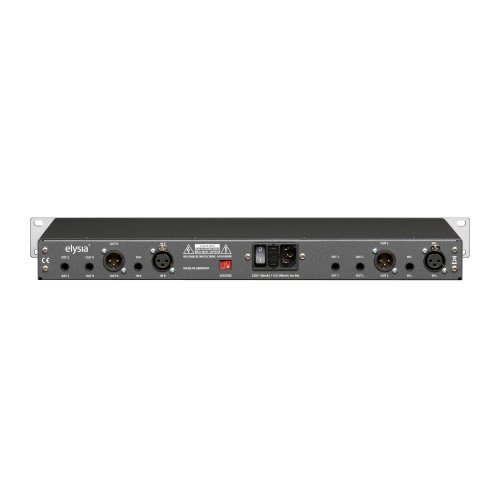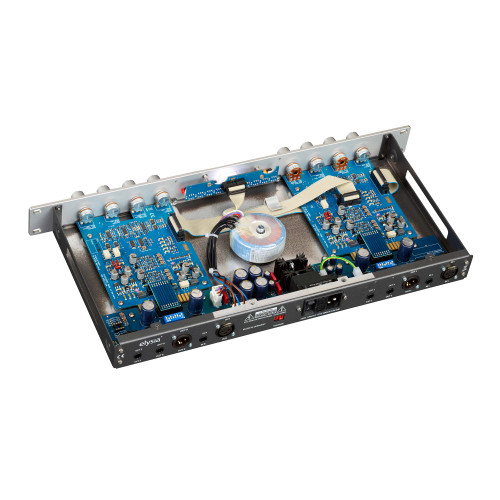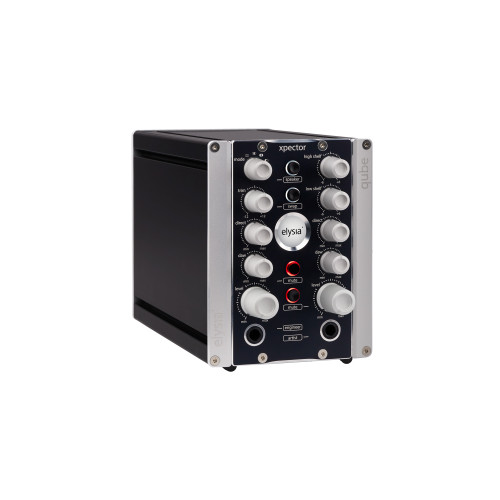The alpha compressor is a modern classic and becomes, since the release in 2008 a mighty tool for professional dynamics processing. Featuring innovative functions and providing absolutely uncompromising sound quality, it sets new standards for enhancing any kind of audio material. It offers M/S processing, parallel compression, limiters, as well as sidechain and audio filters, just to name a few.
The alpha compressor is all about details.
Every single of its many aspects – sound, features, circuitry, components, design, materials, manufacturing – has been thought over and over until there was just nothing left to improve. Basically, every single part of this fine compressor is custom, and most of these are made according to our own designs and specs.
Only the best components the market has to offer are good enough for the alpha, and it shows. Each alpha compressor is manually built to order and tested by ourselves, here at our headquarters in Germany.
The alpha’s benefits sum up in an audio quality that is beyond all doubt. Even when extreme settings are used, the sound always stays clean and powerful. The alpha achieves perfect processing results for all different styles of music and assures the ‘this is it’ feeling of a finished song. Its enhanced functions exceed the potential of normal compressors by far and give you unimagined options for mastering and mixing.
True Mastering Features
The circuitry is a completely new development which provides an amount of openness and clarity which can hardly be found a second time. Every part of the alpha’s signal processing is based on single transistors running in constant class-A mode, and even the sidechain and power supply use discrete circuits. All components are of the highest grade available and exclusively chosen according to their sonic excellence.
M/S technology is commonly known as a variant of stereo microphoning. This technique uses a microphone with cardioid pattern for the middle signal (M) and another one with bi-directional pattern with an offset of 90° for the side signal (S). The main advantage of this technology is its mono compatibility. FM radio stations use M/S technology for transmitting stereo signals exactly for this reason.
To create M/S signals, the left and right channel of the stereo sum are added to generate the mid (M), whereas the side (S) is created by subtracting the right from the left channel:
M = L+R
S = L-R
To decode an M/S signal back into stereo again, M is added to S for the left channel and S is subtracted from M for the right channel:
L = M+S
R = M-S
The integration of an M/S encoder and decoder into a compressor generates new potentials that classic linked stereo compressors can hardly offer. One of the main advantages is the possibility to process the middle and side signals separately. This way you can make the center more compact without corrupting the original stereo spectrum, for example.
Of course it is also possible to enhance the presence of the side signals in an already finished mix. The stereo width can be influenced fast and effectively, too, and it is also possible to compress specific parts of a mix that could not be selected in a stereo mix as precisely as it is possible in M/S mode.
Technical Data
Frequency response
<10 Hz - 200 kHz (-0.5 dB)
THD+N @ +15 dBu, 20 Hz – 22 kHz
Stereo mode (Direct): 0.0039 %
Stereo mode (Compressed): 0.009 %
M/S mode (Direct): 0.014 %
M/S mode (Compressed): 0.034 %
Noise floor, 20 Hz – 20 kHz (A-weighted)
Stereo mode (Direct): -95.8 dBu
Stereo mode (Compressed): -89.3 dBu
M/S mode (Direct): -95.6 dBu
M/S mode (Compressed): -92.3 dBu
Dynamic range, 20 Hz – 22 kHz
Stereo mode: 122 dB
M/S mode: 118 dB
Maximum input level
Stereo mode: +28 dBu
M/S mode: +23 dBu
Maximum output level
Stereo mode: +27 dBu
M/S mode: +28 dBu
Impedance
Input: 10 kOhm
Output: 68 Ohm
Power Consumption
100 W max
Dimensions (W x H x D)
483 mm x 133 mm x 405 mm
19″ x 5.3″ x 16″
Weight
16 kg / 35 lb



















